Indoor plants with long leaves
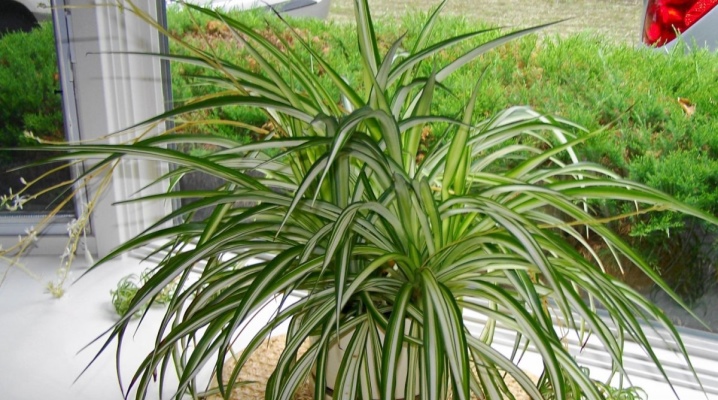
Indoor plants always make home interiors cozier and more inviting. This applies not only to miniature flowers with buds of different colors, but also to green pets with long leaves. The latter attract more attention, are expressive and are rarely lost against the general background. In this article, we'll take a closer look at some of the popular varieties of these plants and take a look at some tips for caring for them.
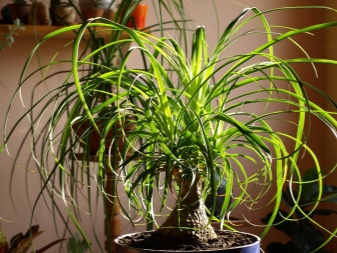
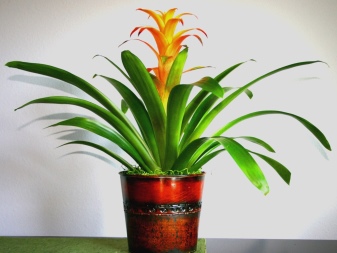
Peculiarities
Indoor plants will never stop attracting people of all ages. Green pets are able to decorate almost any setting, regardless of style and color combinations. That is why they are so often installed at home, in offices, and in different institutions.
House flowers, adorned with spectacular leafy plates of impressive length, are found in many dwellings. They are rarely left unattended, since the clearly visible leaves are the details that are often the first to catch the eye. These living decorations look expressive, and with their help you can fill a variety of interior compositions with life and colors.


Many of the long-leafed flowers can reach impressive heights. Often these green pets grow to be huge, and you have to allocate more free space for them.
But there are also more miniature specimens that can be placed on a table or windowsill without interference. Whatever varieties are discussed, any of them requires competent care.
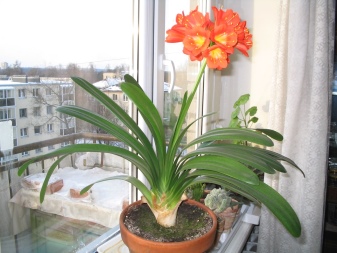
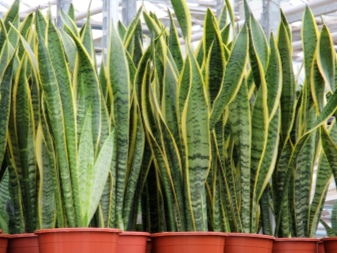
Species overview
There are many different types of indoor flowers that have elongated leaf plates. Each of them has its own characteristics and external parameters. Let's take a closer look at the most popular and frequently encountered specimens.
Mother-in-law's tongue
The second name of this plant known to many is sansevieria. This culture began to be called "mother-in-law" because of the long leaves of a characteristic, imperfectly even shape. This is an unpretentious houseplant that even a florist who has never encountered such flowers before can grow.
The country of origin of "Mother-in-law" is Africa. It comes from the agave family and has over 60 species. Among the beauties of sansevieria, there are even specimens that grow in the tropics on tree branches (epiphytes).
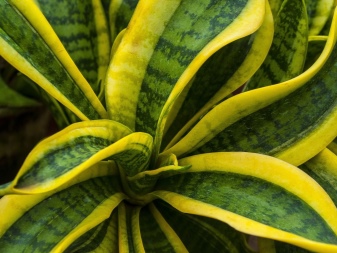
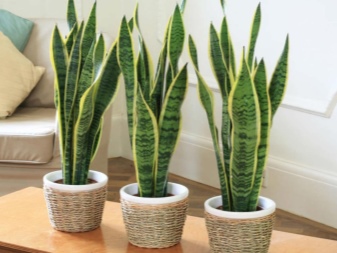
"Mother-in-law's tongue" is distinguished not only by solid dark green, often wide leaves, but also by a strong rhizome, which allows the plant to easily survive dry periods. The culture can do without watering for a long time, and there will be no negative consequences.
Proud sansevieria is undemanding, but you must be prepared for the fact that its heavy long leaves will fall out of the pot. For planting, you need loose soil and a spacious pot.
It is advisable to choose clay containers, because the roots of this plant will simply break the plastic container.

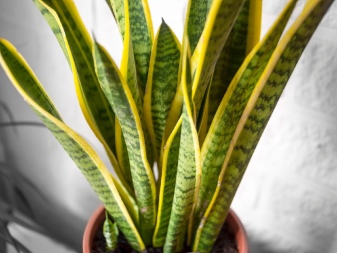
Dracaena
Dracaena is one of the most popular indoor plants. Just take care of her. Dracaena flower growers are primarily attracted by its rich appearance. Such a plant will easily fit into many environments and will become their highlight.
Dracaena is a lover of moderate temperature values. In summer, the plant feels comfortable at a temperature of 20-25 degrees, and in winter - at least 15 degrees.In warm seasons, it will not be superfluous to take the dracaena to fresh air.
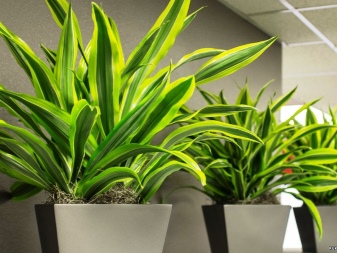
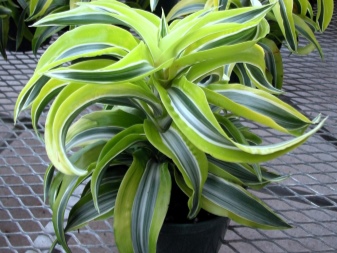
This plant with long, narrow, thin and sharp petals at the ends needs a sufficient amount of natural light, but it must be protected from direct sunlight. This beauty can be located on the north or west side.
Proper watering of the flower is important. Dracaena loves moisture, so it needs to be watered abundantly. Do not allow overdrying of an earthen coma. The soil should always be slightly damp. But it is not allowed to overfill the culture either. Stagnant water along with low temperatures will lead to root death.

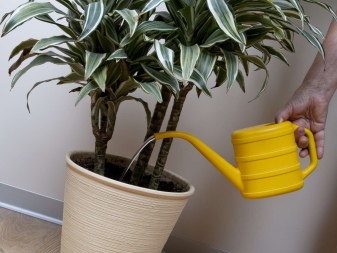
Yucca
Spectacular evergreen with North American roots. There are more than 40 subspecies of this spectacular culture. Yucca is either rosette or tree-like. Sometimes the leaves of this plant reach 100 cm in length. Leaf blades are collected in a bunch or neat rosettes.
In height, this plant can reach serious marks. There are specimens that are several meters long, but there are also more "modest" flowers, the growth of which reaches no more than 1 m.
The color of the leaves can also vary. They are dark green or gray. There are specimens whose leaves are perfectly even, toothed, falling or smooth. The flowers of the culture are usually white or beige. The shape of the flowers can resemble cups or bells.
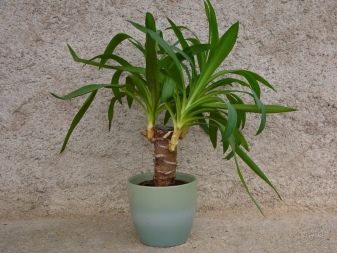
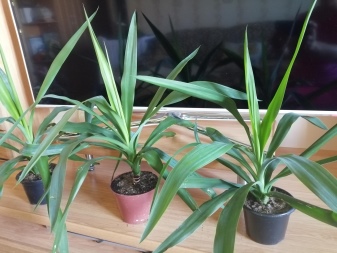
If this flower grows at home, it will not constantly delight people with lush flowering. Yucca can only bloom beautifully in the garden.
There are several subspecies of this culture, for example:
- aloe leaf;
- "Whippla";
- prickly;
- "Glorious";
- "Shidigera";
- short-leaved;
- coracoid;
- filamentous;
- elephant.
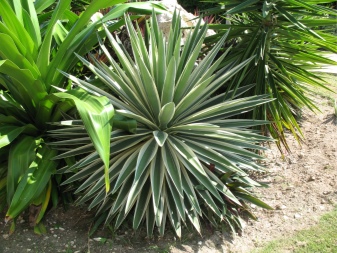
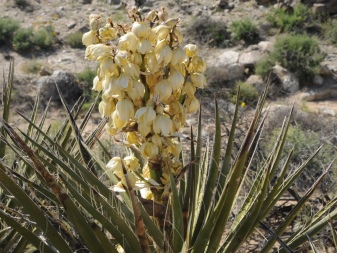
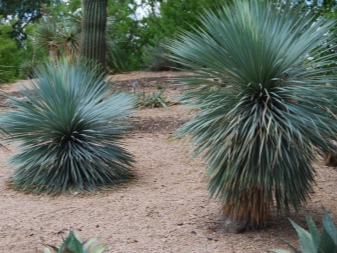

Yucca is a plant that loves a lot of light. At moments of intensive growth, the flower needs especially good lighting, but, as in the cases described above, it is better to protect the planting from the direct rays of the sun.
At home, this flower is allowed to grow in a suitable flowerpot. It is important to correctly choose the best place for this culture, given its size.
You should not allocate too small and low corner for Yucca if she grows tall and lush. Cramped conditions will not work well for this plant.

Chlorophytum
One of the most unpretentious plants. It is an attractive herbaceous perennial with green or white-green narrow leaf blades. There is a drooping mustache with small bushes of new plants. Like the popular and well-known geranium, this culture can grow without problems in almost any soil. The pot can be of any size. Chlorophytum can be placed both in the shade and in a lighted area in the house. You can not water this plant for a month, because of which it can fade, fade and even sag, but even in such circumstances it does not threaten drying out.
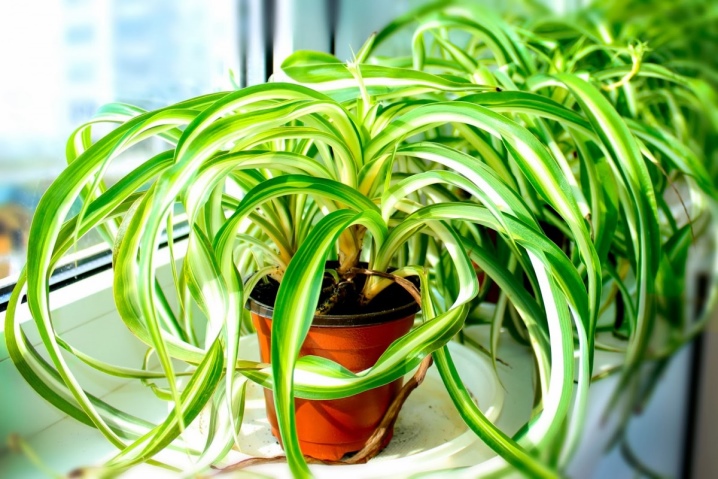
If you do not spare water for this flower, it will start up such good rhizomes that it will be difficult for them to fit in a pot. As a result, a large number of children will appear so that an impressive mass of long foliage evaporates moisture. The rhizomes of the plant in question are always fleshy and dense. Moisture accumulates in them. If there is little watering for the planting, it will continue to live normally at the expense of these water supplies.
Chlorophytum lives on average about 10 years. Draws attention with long leaves of green or dull green color. They have contrasting longitudinal stripes.
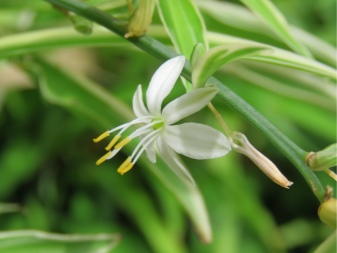

Nolina
This is a deciduous ornamental houseplant. At home, it can reach 2 m. Nolina has a trunk expanding closer to the base. It is this extension that constitutes a place for water reserves. The roots of the plant go into the ground to a modest depth, so the flower is fed from the upper layers of the soil.
Nolina has long leaf blades of a characteristic dark green color.Due to this, the plant looks very much like a lush palm tree. The foliage is located mainly at the top of the branches, which are erect.

The leaves of this plant are long and narrow. Culture is very fond of a sufficient amount of light. It is recommended to place the pot with nolina on the northern or western windowsills, since, being on the south side, it can suffer from unnecessarily aggressive exposure to the sun's rays. In winter, the plant goes into a dormant state, but it still needs light, so you need to take care of installing artificial light sources.
The plant needs active watering in spring and summer. But too often it is not required to water the flowers; on the contrary, it is better to resort to these care procedures rarely. You should not keep nolin in moist soil.
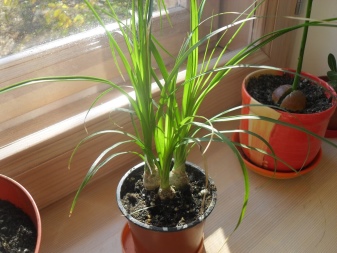

It is recommended to wipe the long leaves of the plant in question from time to time and resort to spraying them.
For these procedures, only boiled water is required. If there is no time for preliminary boiling of the liquid, then it will at least need to be insisted.
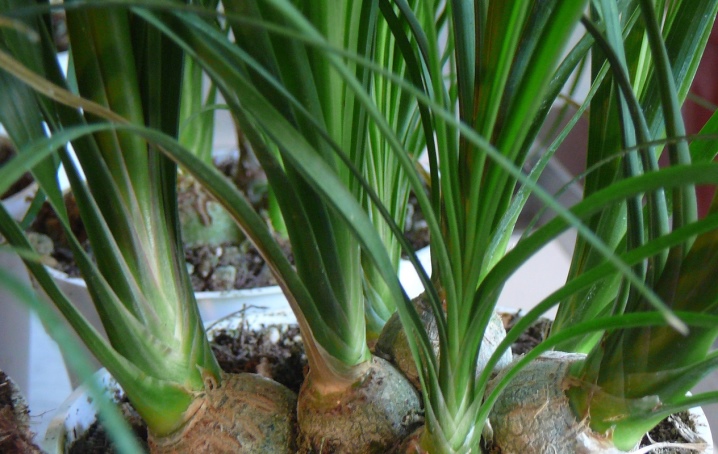
Care Tips
If you decide to decorate your home with living decorations - spectacular plants with elongated leaves, then you should be prepared for the fact that they need proper care. To the delight of gardeners, many of the varieties of these crops are famous for their unpretentiousness, and it is very easy to care for them. But this does not mean that you can give up on landings and not maintain their beauty and health in any way.
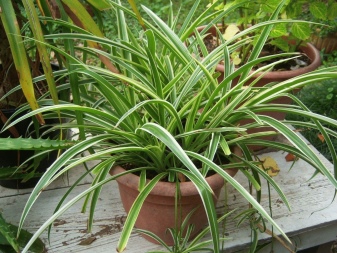

Consider a few useful guidelines for keeping such green pets.
- We must not forget about watering the plants. Different types require different watering. Some crops are more moisture-loving, while others, on the contrary, do not tolerate when the soil in which they are located is waterlogged. The main thing is not to leave pets without liquid for a long time, but you should also not make their roots float in water (and because of this rot).
- It is necessary to make suitable fertilizing, choose good soil mixtures of a suitable composition.
- Plants need timely pruning in accordance with their specific species.
- Instances with long leaf blades require special care. Their foliage must be carefully and as carefully as possible to wipe off accumulated dust (or dirt). Also, the leaves are additionally polished. The last procedure is needed to give the planted indoor flower a beautiful shine and an attractive appearance in general.
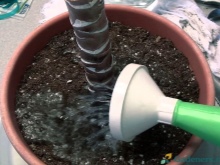
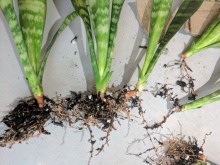
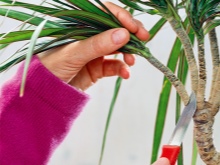
When growing at home any types of plants with elongated leaf plates, it is important to consider the temperatures in which they are more comfortable. You should also take into account the amount of light that the planted flowers need. Most long-leaved specimens love the sun, but in limited quantities. Florists need to make sure that their "green wards" are not exposed to the harmful effects of direct sunlight. This rule cannot be neglected, otherwise the culture may suffer severely and cover with burns.
Different types of flowers with elongated leaves require transplanting at different periods of time. When performing such work, it is very important to be as careful as possible with the rhizomes. Even the densest and strongest roots can be accidentally damaged and cause very serious damage to this plant. When transplanting such flowers, you must be as careful and careful as possible.
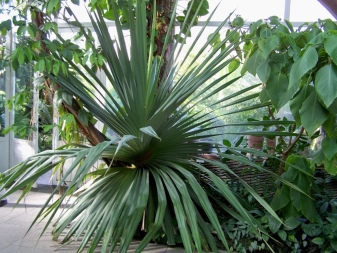
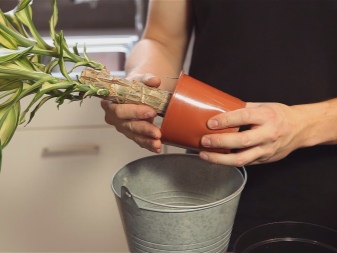
Examples in the interior
Plants with long leaves can be used to make the interior more attractive and stylish. Let's consider several successful examples of interior ensembles.
- The beautiful yucca will harmoniously fit into the interior of the living room with a rough wall decoration made of wood. Plants can be planted in large ceramic flowerpots and arranged surrounded by a soft brown sofa. It is advisable to place the entire ensemble near the window.

- Mother-in-law's tongue, planted in a large snow-white flowerpot, will be a chic addition to the minimalist bedroom interior, designed in calm light colors. The flower should be placed near the wooden bed.
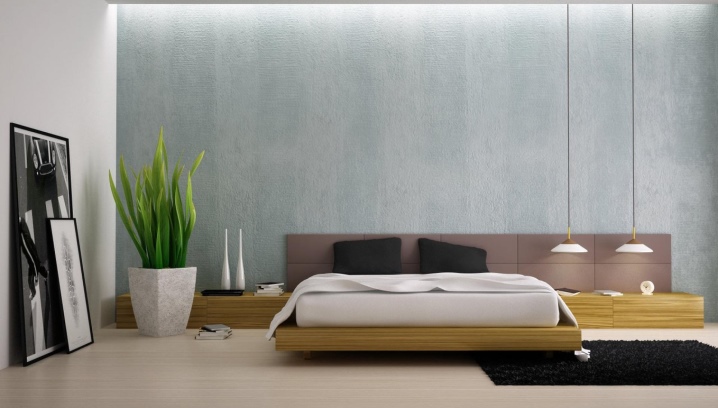
- Nolina is a truly unique plant that looks very interesting. You can plant a couple of these trees in modern black pots with glossy surfaces and put them on pedestals or pedestals of the same black color. Dark paints, coupled with glossy surfaces, will become chic components in the interior of a modern style. Such decorations will find their place against the background of contrasting finishes in gray, beige or white.
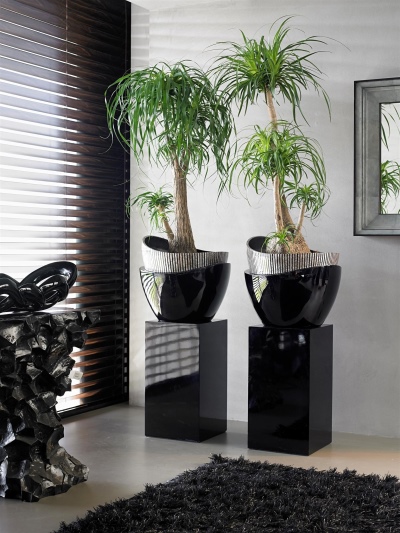
- A tall dracaena with pointed leaves can be placed in an angular snow-white flowerpot and placed near the front door (about the same height) in a spacious room designed in light colors. The plant will blend in with both white paints and wood floors. With such a lively decoration, the interior will turn out to be more comfortable.
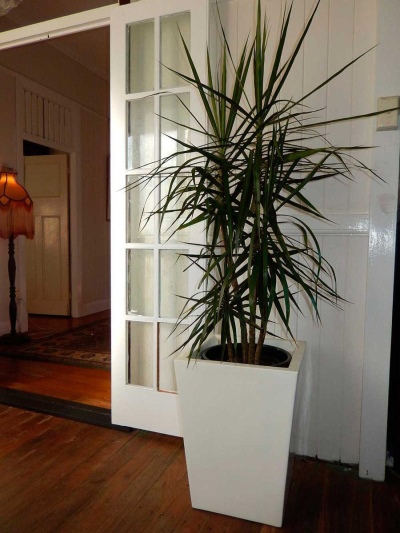
Then watch the video about the plant "Pandanus" or spiral palm.































The comment was sent successfully.